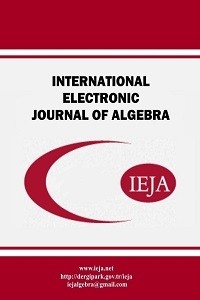Unipotent diagonalization of matrices
Unipotent diagonalization of matrices
Unipotent equivalent, strongly unipotent equivalent matrix, ue- diagonalizable matrix, nilpotent matrix idempotent matrix,
___
- G. Almkvist, Endomorphisms of finitely generated projective modules over a commutative ring, Ark. Mat., 11 (1973), 263-301.
- A. J. Diesl, Nil clean rings, J. Algebra, 383 (2013), 197-211.
- K. Matthews, Solving the Diophantine equation $ax^{2}+bxy+cy^{2}+dx+ey+f=0$, preprint, 2015-2020.
- K. Matthews, http://www.numbertheory.org/php/generalquadratic.html.
- J. Ster, Rings in which nilpotents form a subring, Carpathian J. Math., 31(2) (2015), 157-163.
- ISSN: 1306-6048
- Yayın Aralığı: Yılda 2 Sayı
- Başlangıç: 2007
- Yayıncı: Abdullah HARMANCI
Haohao WANG, Jerzy WOJDYLO, Peter OMAN
A note on Friendly and Solitary Groups
Shubham MITTAL, Gaurav MITTAL, R. K. SHARMA
A note on the solvability of a finite group in which every non-nilpotent maximal subgroup is normal
Wenjing LIU, Jiangtao SHI, Yunfeng TIAN
Two generalized derivations on Lie ideals in prime rings
Ashutosh PANDEY, Balchand PRAJAPATİ
The dual notion of $r$-submodules of modules
An extension of $S$--noetherian rings and modules
$(n,d)$-$\mathcal{X}_R$-phantom and $(n,d)$-$_R\mathcal{X}$-cophantom morphisms
Minimal rings related to generalized quaternion rings
Jose Maria GRAU, Antonio M. OLLER-MARCEN, Steve SZABO
Deformations and Extensions of BiHom-alternative algebras
Taoufik CHTIOUI, Sami MABROUK, Abdenacer MAKHLOUF
